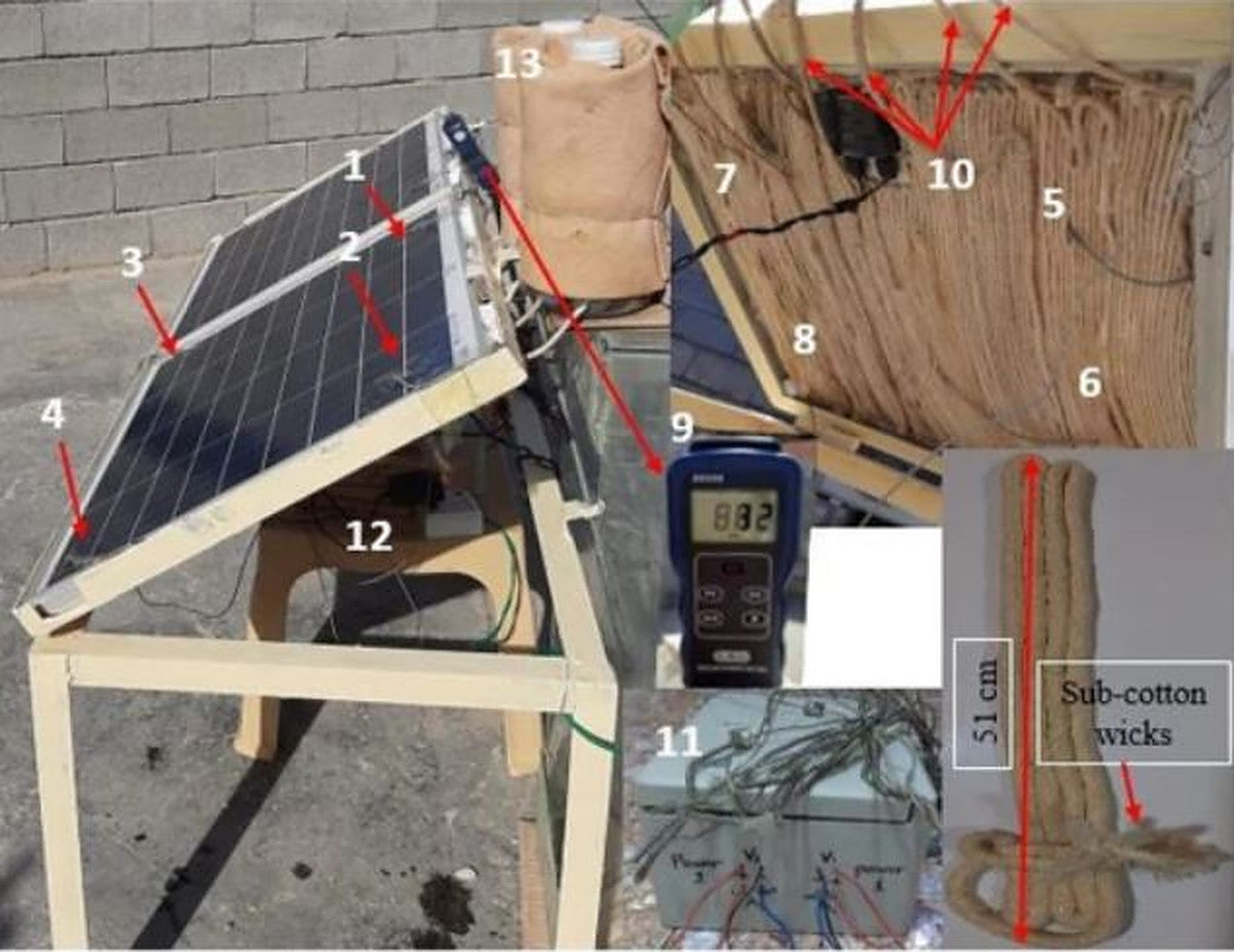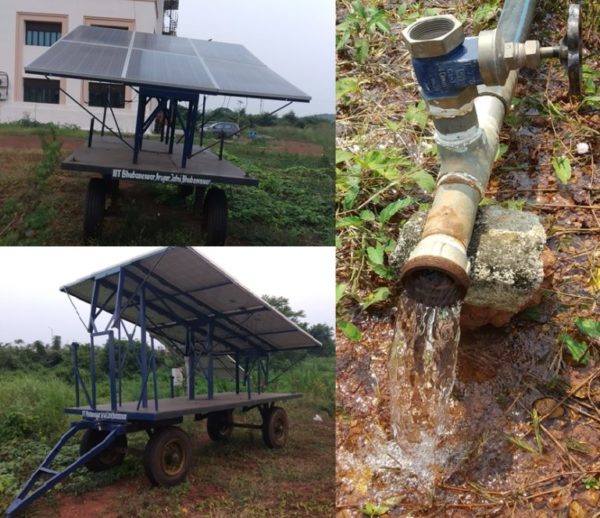https://www.pv-magazine-india.com/2022/07/29/cooling-down-solar-modules-with-cotton-wicks-immersed-in-water/
Cooling down solar modules with cotton wicks immersed in water

The cotton wicks immersed in the water are attached to the backside photovoltaic module.
Image: University of Miskolc, Process Integration and Optimization for Sustainability, Creative Commons License CC BY 4.0
From pv magazine Global
Researchers from the University of Miskolc in Hungary have developed a passive cooling technique for photovoltaic modules which they claim is able to lower the panels’ operating temperature by up to 22%.
The novel technique consists of attaching cotton wicks immersed in the water (CWIWs) to the backside of the photovoltaic module. The water is supplied to cotton wicks from top to bottom by gravity which the scientists said helps the effective absorption of cotton and reduces water consumption. “Exposure of the wetted cotton wicks to the surrounding air decreases dry air temperature and increases humidity, producing evaporating cooling that can exploit it to absorb the rising heat from the backside of the PV module,” they explained. “The technique contributes by creating a continuous cooling environment with less water consumption and better performance under hot conditions than in other studies.”
The CWs were arranged as serpentine forms avoiding any space between them. The scientists fixed them by using thermal silicon. They also placed two plastic bottles full of water at the top edge of the PV module. “The gravity-free flow of water helps transmit the water to the CWs without extra power,” they emphasized. “Thus, this method helps to distribute the water entirely from cotton wicks throughout the PV module.”
The performance of a polycrystalline solar module with a size of 0.65 m × 0.55 m and equipped with CWIWs was compared with that of a reference panel without the cooling system. They used a data logger with two voltage sensors and two current sensors. It recorded temperature, voltage, and current values every ten minutes during the experiment days. “The experiments were conducted according to climatic conditions of Basra City, Iraq, from 20 to 29 of August 2021,” the specified. “August is characterized by a sunny month with high temperatures and low humidity on most days with moderate winds.”
Through their measurements, the academics found that the PV module with CWIWs cooling showed thermal behavior closer to the ambient temperature throughout the experiment period due to evaporating cooling of CWs. “The highest temperature recorded of the PV module with the CWIWs was 46.2 C at 12:20 PM, while the ambient temperature was 43.8 C,” they stated.
Compared to the module without cooling, the CWs-equipped module had an operating temperature that was 22% lower. “The moist condition resulting from the cotton bristles immersed in water and exposed to the wind has provided appropriate cooling that enhances efficiency to 7.25% and the power yield increment about 16.3 W,” they further explained. “Using CWIWs decreases entropy generation by about 14% due to reducing the lost exergy of the PV module than the PV module without cooling.”
The Hungarian group presented the passive technique in the paper Effect of Evaporative Cooling on Photovoltaic Module Performance, which was recently published in Process Integration and Optimization for Sustainability. “The passive cooling applied in this work enhanced the performance of the PV module higher than in other similar studies, making it more reliable for application,” it concluded.
This content is protected by copyright and may not be reused. If you want to cooperate with us and would like to reuse some of our content, please contact: editors@pv-magazine.com.




